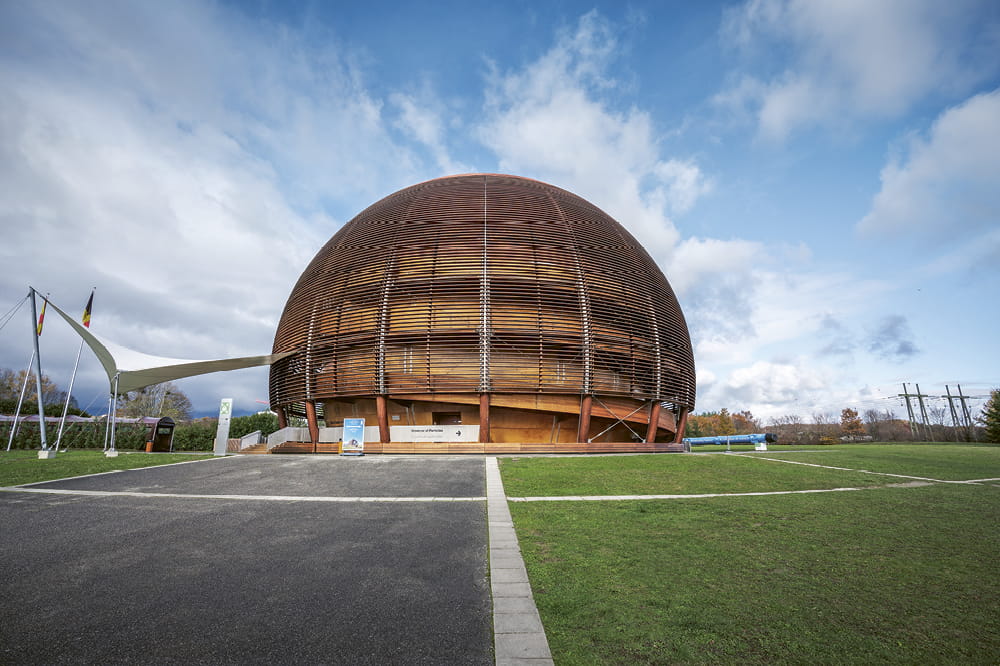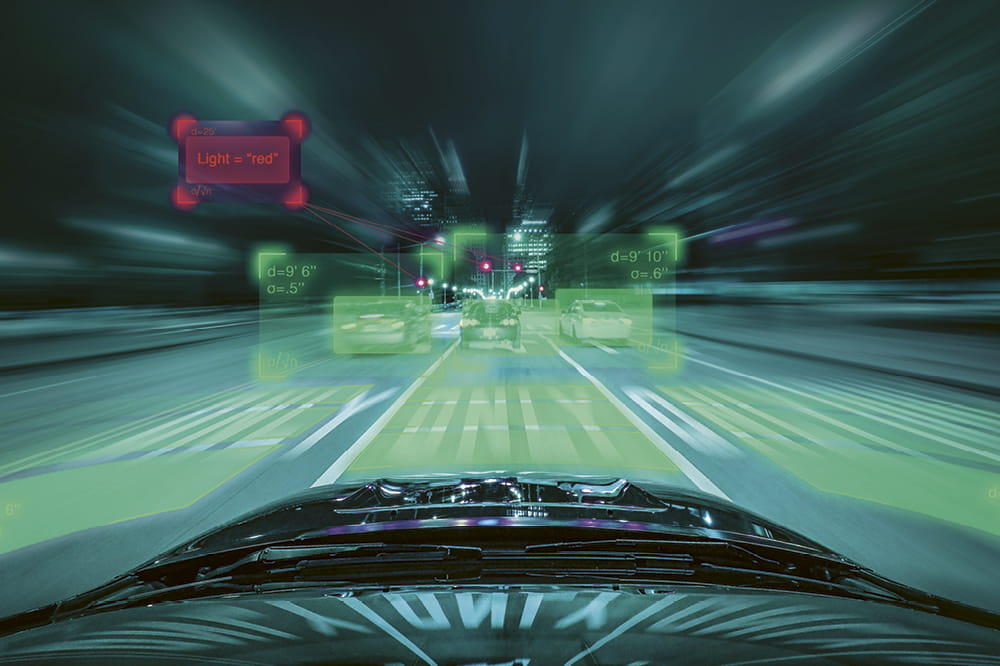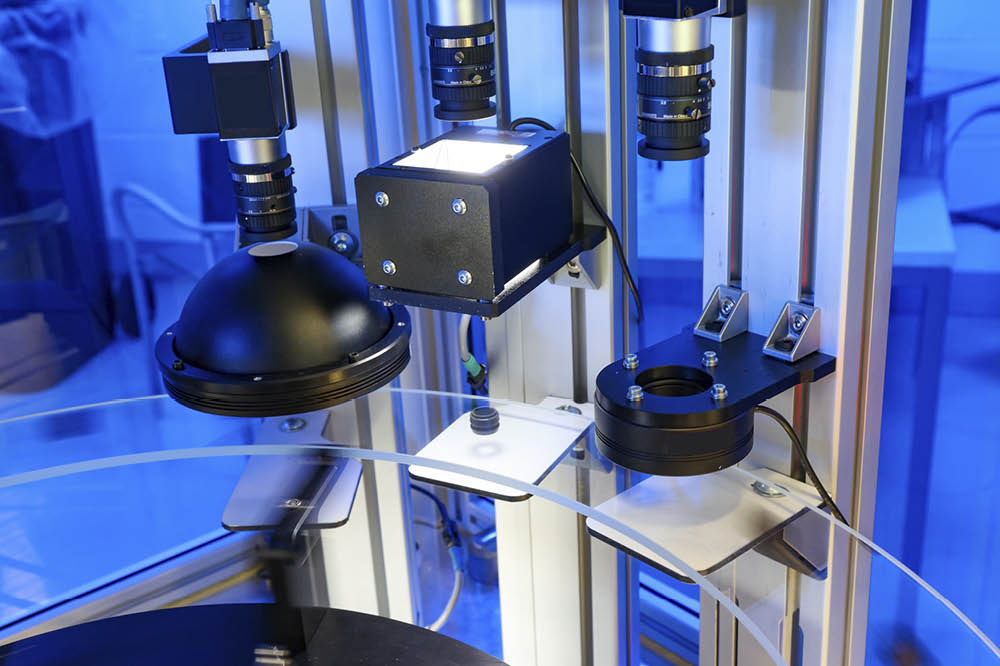Obtain news and background information about sealing technology, get in touch with innovative products – subscribe to the free e-mail newsletter.

Planning New Production Lines Made Easy
Freudenberg Sealing Technologies has begun reconfiguring existing production lines using visualization and simulation software. The first impressions are positive, and the prospects promising.
Armin Hermann loves to run the materials lab at the Freudenberg Sealing Technologies plant at Schwalmstadt, Germany. His work relates to the production of sophisticated hydraulic and pneumatic seals at the facility, which is north of Frankfurt am Main. But Hermann is currently in demand in another role. He is a project manager who is reconfiguring several production lines. He has several employees on his team, working with planning software that really delights him. “Until now I have only dreamed of the possibilities that the tool offers,” Herrman confesses. “In the past, we have planned new factory layouts with static, two-dimensional CAD factory models.” By contrast, the new tool enables a 3D simulation of the newly planned production areas, allowing the depiction of the space needs for manufacturing processes and maintenance work, including the deployment routes for automated mobile robots (AMRs).
Everything in flow: injection molding machines, cobots and mobile robots are designed to guarantee a smooth and automated material flow in production.
Planning Pitfalls Immediately Identifiable
The tool that Hermann found so captivating is visualization and simulation software from Visual Components. Founded in Finland, the company now belongs to the KUKA Group. The software simulates how production and all associated processes interact. It’s based on the input of all the relevant data on the building footprint as well as the equipment and production processes planned for the space. Hermann stresses the added value that the tool provides. “One simulation of this kind says more than a thousand words,” he said. “We can immediately give everyone a comprehensible view of where the pitfalls and traps lurk during a planning process. The tool allows us to move in the right direction early, saving time and money.”
Alexandra Krupp is co-responsible for the introduction of the visualization and simulation software. She is Director Global Process Development, Technology & Innovation at Freudenberg Sealing Technologies. She says the software's benefits are clear. “The tool ties various flow relationships to one another. That means crucial production parameters such as material flow, staffing flow and information flow can be considered and coordinated with one another as effectively as possible.” Already after the company's first experiences, Freudenberg Sealing Technologies is planning and adapting its own factory layouts better using the new software, Krupp said. “Until now, in projects of this kind we first determined basic principles before we created the different variations of the buildings, spaces and production lines. At the end, we reproduced the best version with cardboard boxes based on defined criteria.” It did create a spatial impression of the situation, but entirely without simulations to vividly portray the interaction of all the key processes.
Simulated Videos Instead of Static Views
The visualization and simulation tool solves this shortcoming. It shows production processes in videos, visually depicting how robot arms' turning motions work or the path that an AMR takes to the installation, for example. All the actions of machines and employees are easy to follow, making them comprehensible to the viewer. Changes can be carried out conveniently with drag and drop. “Furthermore, we recognize immediately how accessible a machine has to be to allow convenient maintenance work,” Krupp said. This also applies to the space required for lifting devices used when tools are placed in the equipment or removed. “In addition, we are seeing how the lines on the floor should run so they don’t block an AMR,” Hermann added. “At the same time, the visualization software shows us where the routing of ventilation ducts can restrict us in terms of height when building systems.” This type of video simulation is a crucial advantage over the static planning that has been the standard in the past.
The software also enables those responsible at Freudenberg Sealing Technologies to notify manufacturers at an early stage if they need to make adjustments to the equipment they are supplying. For example, connectors or housings might have to be attached in such a way that later maintenance work does not become more difficult. In the process, the visualizations and simulations help to avoid misunderstandings at the manufacturer.
The tool allows us to move in the right direction early, saving time and money.
Armin Hermann, Manager, Materials Lab, Schwalmstadt at Freudenberg Sealing Technologies
Freudenberg Sealing Technologies can also use the tool to plan completely new factories, so-called greenfield projects. For the time being, however, they are expected to be used for the redesign of existing production sites or brownfields. The company first used the tool in mid-2024. When a manufacturing area was reconfigured in Bursa, Turkey, the simulation showed what had to be adjusted to assure access to the machines and the use of forklifts, all in a completely comprehensible way.
Production as Trouble-free as Possible
In Schwalmstadt, the software is currently facilitating the planning for new production lines, making the task a bit easier for lab and project manager Hermann. “Here we have several goals. We want to further automate production processes, saving energy and maximizing the traceability of our products,” he said. In the future, AMRs, cobots and employees are expected to collaborate with perfect coordination to guarantee a seamless production process. Up to now, humans have intervened in the production process, as they have to remove finished parts from several production cells in order to transport them to so-called batch ovens at another location where the seals are post-heated. That means the machines always had to stand still for a while. And then there are the ergonomic factors: With the current method, employees have had to move several tons of material from a production cell per day. This is a tremendously demanding task.
More than 1,000 words: Turning circles of robot arms, deployment paths of Automated Mobile Robots (AMR) and the accessibility of systems for maintenance. Everything can be visualized and optimized with visualization and simulation software.
That should change in the future with the use of a small, low-energy post-heating oven in each production cell. Production and post-heating both take place at the same location, without the need for human intervention and thus with downtime. The visualization and simulation tool helps to identify the ideal arrangement of machines and robots as well as the best possible reconfiguration of the space. For example, an AMR could bring plastic parts from storage to the production cell at the predefined time, where a cobot would receive them and then feed them into the injection molding machine. Afterwards the cobot removes the processed components and then transfers them to the post-heating oven. An AMR then picks up the finished seal at the appointed time and brings them back into storage. Automation would be a perfect approach since all the process steps would be in a flow, without further intervention. Instead of block production, the manufacturing takes place in the so-called single piece flow process. This allows shorter throughput times and easier, more transparent control.
Krupp and Hermann are very satisfied with the first results of the new planning process. The conversion of the first of six production lines has taken shape virtually and will be implemented in 2025. The integration of the post-heating ovens into the production cells simultaneously lightens the load at another station. Currently, a total of 23,000 sheets of paper pile up per year just for the documentation at the post-heating in the main batch oven. In the end, every seal must be allocated and traceable. With single piece flow, this will be a considerably leaner operation since production and post-heating take place entirely within a closed process in a production cell.
So the new visualization and simulation software is already bearing fruit. "The tool is of enormous help in taking our manufacturing to the next level," Krupp summed up. "The simulations visualize all relevant production processes, can be adapted in an instant and thus streamline our planning process. In Schwalmstadt, we end up with optimized material flow leading to more efficient use of energy. And we benefit from the one-to-one traceability of our products in production. This is all in line with the idea of automated single piece flow.”
From Digital Twin to Virtual Point Cloud
The visualization and simulation tool is meanwhile promising to generate still more added value for Freudenberg Sealing Technologies. A digital twin of the production line can be created from the data collected in the manufacturing operations. The twin could identify potential defects or maintenance measures early. Krupp can even imagine representing an entire shopfloor as a virtual point cloud using a 3D scanning process. With this database, the software could present and plan future automation projects even more comprehensively and rapidly.
But for now, Hermann and his team in Schwalmstadt will continue to work single-mindedly on planning and implementing all the production lines that are scheduled for a transformation.
More Stories About Digitalization

Join Us!
Experience Freudenberg Sealing Technologies, its products and service offerings in text and videos, network with colleagues and stakeholders, and make valuable business contacts.
Connect on LinkedIn! open_in_new











